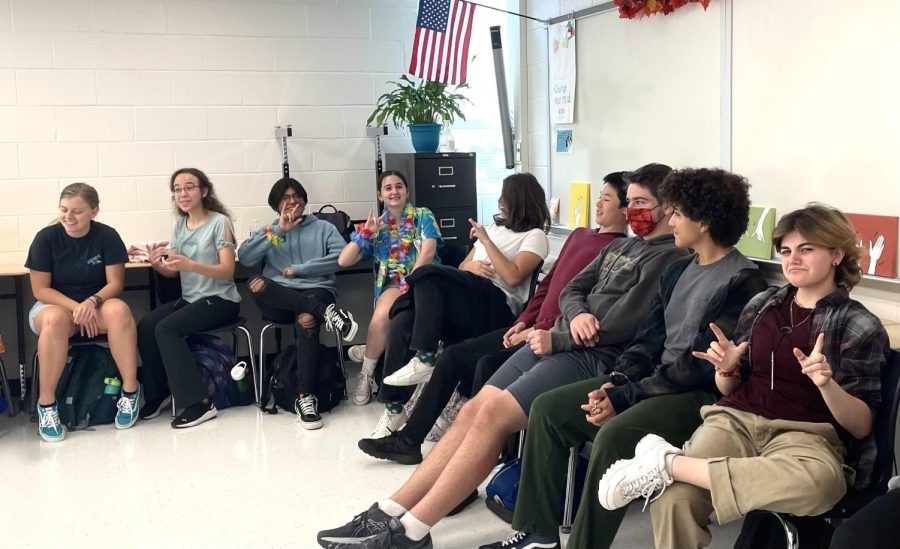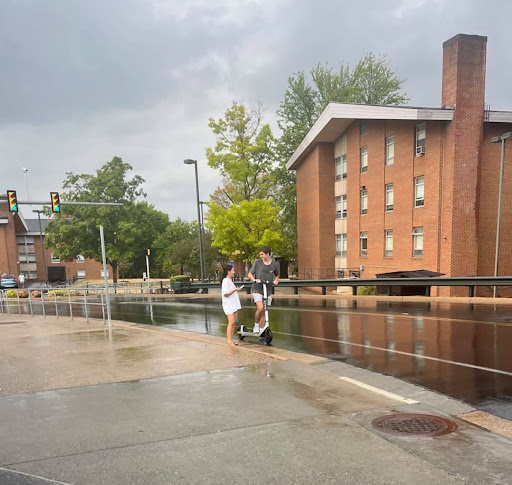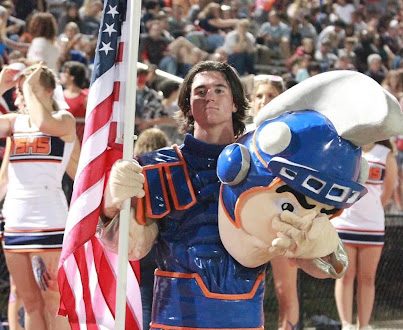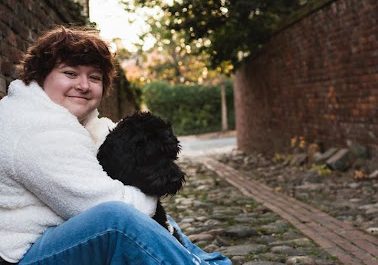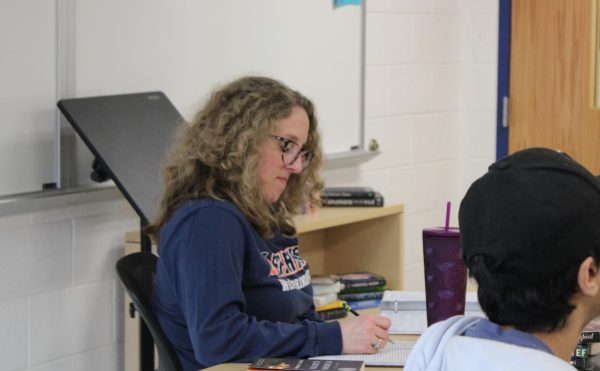Voices off, signing on
Photo courtesy of Anisha Iqbal
Heather Kendrick teaches her American Sign Language 2 class during fifth period. Her classroom is arranged so the chairs and tables surround the edges. This orientation is so everyone can easily watch others sign and communicate effectively.
In room 1223, where the chairs and tables are pushed against the wall, the floor becomes the center stage for Heather Kendrick to convey the culmination of her experience as a deaf person and educator.
Kendrick has taught American Sign Language (ASL) for 10 years at WS. Although deaf since early childhood, Kendrick didn’t have the opportunity to learn ASL until much later in life. Instead, she grew up with oral learning, an approach to deaf education dependent on visual learning and lip-reading.
“In college, I took Sign Language and realized how much easier it was,” said Kendrick through her interpreter, Joanna Ciccarello. “For deaf people, speaking, listening, and lip reading are not full access. Sign Language as a visual language is 100% accessible and easier to understand and be included.”
ASL classes are hands-on experiences, and students are expected to leave their voices behind at the door. Since it is all visual, a lot of moving around and games are involved in the teaching process. Kendrick wants the class to be more than just memorization, so she tries to do something different each time.
“I let students lead discussions at the beginning of class. We discuss the calendar and everything going on in their lives before reviewing,” said Kendrick. “I try to teach them using repetition, just like you would with a baby. You talk about it, and you show it very slowly. I try to do the same thing. We use the language and interact with one another every day.”
The ASL program serves as a catalyst for promoting inclusivity and accessibility for the deaf community. According to the U.S. Census Bureau, 11.5 million people in the country have hearing loss ranging from difficulty hearing to complete deafness. Yet, only six out of 30 high schools in FCPS offer ASL as an on-campus class.
“In FCPS, they’ve struggled. They don’t have a lot of schools that offer it as a class. I’m trying to encourage my children’s high school to offer ASL, and they say, ‘Oh, we have the Academy. We don’t need to set up a program here; just send them elsewhere.’ I don’t like that, and I really want my kids’ school to have ASL,” expressed Kendrick.
Though the program is rare within the county, WS has not only provided a platform for students to learn ASL, but recently expanded it by welcoming Jennifer Cranston, a second ASL teacher who also teaches at Irving Middle School. There are also many resources and opportunities for students not taking the class, including the ASL club and ASL honor society, where students can practice signing and participate in volunteer work.
“I believe ASL at WS does a fantastic job in inclusivity/accessibility. In ASL 1, one of the things we learn about is Deaf Culture. We learn about community beliefs, history behaviors, and art that have been influenced by the Deaf community,” said senior Kanna Yerks who takes ASL 4. “By making that a part of the curriculum, I feel like it helps us (as a class and individuals) be more accepting and support the voices that need to be heard.”
Educating students about proper etiquette around deaf people is also a central topic. It is established early on in the course that terms such as hearing-impaired are inappropriate when referring to deaf people as it is dehumanizing to label someone as impaired or lacking.
As technology expands, resources and accommodations for deaf people have also increased. However, accessibility is not always a guarantee. Kendrick once requested that a light be installed in her classroom to notify her in case someone knocked on the door, but was denied. The lack of access coupled with miscommunication could lead to uncertainty during emergency situations, as Kendrick cannot hear announcements made through intercoms.
“During a lockdown, I don’t really know what’s happening,” said Kendrick. “We talked to security, and they tend to text me and let me know directly what’s going to be happening, but if it was a real emergency, I don’t know if they would remember to do that.”
The burden of communication should never have to fall upon the deaf individual. Being forced to lip-read to keep up with conversations is often stressful and, thus, should not be an expectation. Better alternatives are written notes, body language, gesturing, or simple signing/finger spelling. Inclusivity takes a mutual effort, and for deaf people to feel accepted and comfortable, it should be the standard.

